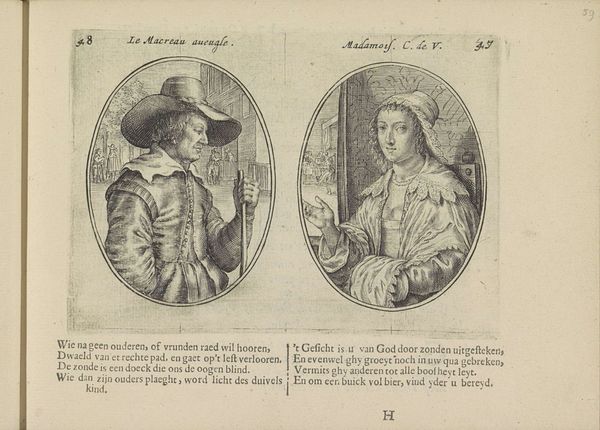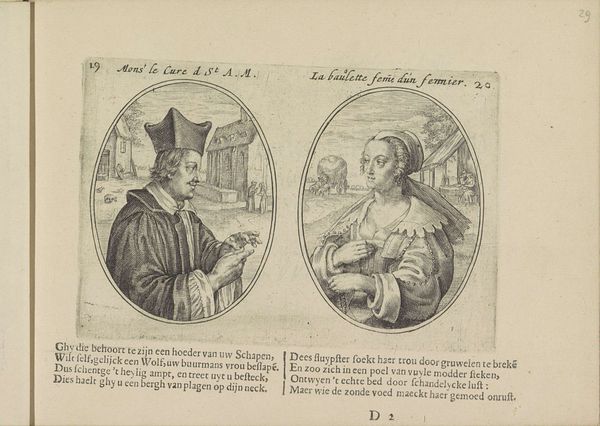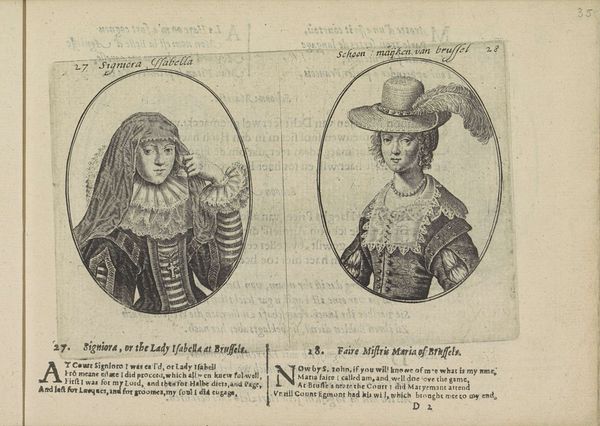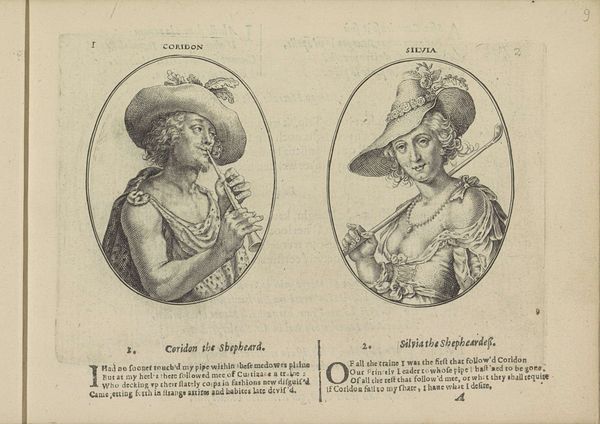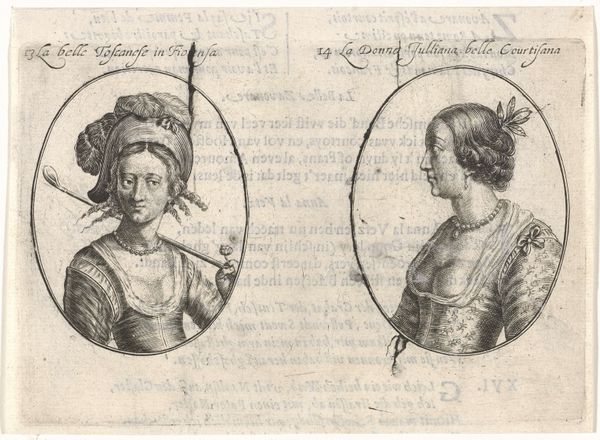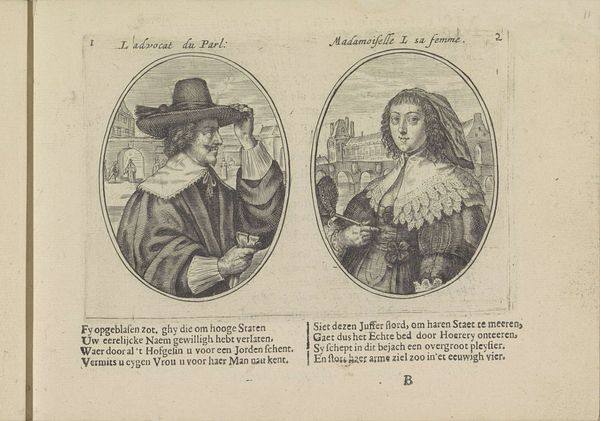
print, engraving
#
portrait
#
baroque
# print
#
figuration
#
genre-painting
#
engraving
Dimensions: height 103 mm, width 146 mm
Copyright: Rijks Museum: Open Domain
Editor: This engraving, "Lakei en wasvrouw," made by Crispijn van de (II) Passe in 1641, pairs a liveried Black man with a washerwoman, each framed in their own oval. It’s stark – the contrasts, the lettering underneath… What can we interpret from these two portraits placed side-by-side? Curator: Well, viewed through a historical lens, these pairings often served a didactic purpose. These prints, especially when accompanied by text as here, aimed to convey a moral message reflecting societal values of the time. Notice how the figures are titled, and how verses sit underneath them. Editor: Right. What kind of values are being expressed? Curator: Consider the social standing of each figure. The “Lakei,” or lackey, a servant, and the washerwoman are positioned in relation to perceived virtues or vices. Are these idealized images, or are they critiques? Editor: I see the writing below...were these verses commenting on morality? Could they be criticizing the social order rather than upholding it? Curator: Precisely! The role of prints in disseminating social commentary during the Baroque era is vital. Who was the audience for these prints, and how did their context influence the reception of such images? Prints were more accessible than paintings. Consider also that these were sometimes bound into books or circulated as individual sheets. The way they were viewed shaped the message they conveyed. Editor: So, it is like a window into the attitudes and societal values around class and maybe race from that period. Curator: Yes, and questioning those attitudes is key. We move beyond mere description, to actively understanding the political intent in representations of diverse people and classes, and this affects what the art "means". Editor: It gives a completely new perspective! Thanks!
Comments
No comments
Be the first to comment and join the conversation on the ultimate creative platform.

